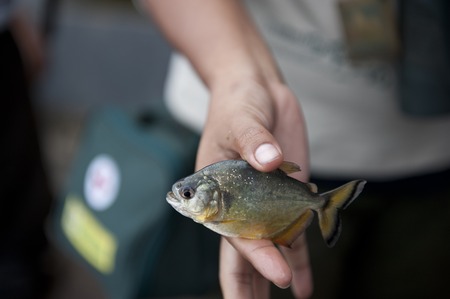1. Introduction: The Appeal of Coarse Fishing in the UK
Coarse fishing holds a special place in the heart of British angling culture, echoing through misty mornings by winding rivers and tranquil lakes across the countryside. Its not just a pastime; its a cherished tradition, woven into the fabric of rural life for generations. From the gentle plop of a float on still water to the thrill of a tench or barbel tugging at your line, coarse fishing offers a uniquely British blend of quiet contemplation and subtle skill. Whether casting from the banks of the Thames or nestled beside an ancient fen, anglers find both connection to nature and camaraderie with fellow enthusiasts. This deep-rooted love for the sport shapes how we approach our equipment—especially when choosing between high-end and budget coarse fishing rods. Understanding this heritage sets the stage for exploring what really matters when selecting tackle that suits both your aspirations and the quintessentially British waters you fish.
2. What Defines ‘High-End’ and ‘Budget’ Coarse Rods?
When discussing coarse fishing rods in the UK, the distinction between ‘high-end’ and ‘budget’ options goes far beyond just price tags. It’s a matter of materials, craftsmanship, and overall angling experience. Let’s break down the key elements that set premium rods apart from their more affordable counterparts.
Materials: The Backbone of Performance
At the heart of any rod is its build material. High-end coarse rods often use advanced carbon fibre blanks, sometimes layered with nano-resins or incorporating additional strengthening technologies. These materials deliver remarkable sensitivity, lightweight handling, and robust power for those hard-fighting tench or wary bream. In contrast, budget rods may feature lower-grade carbon composites or even fibreglass, which tend to add weight and reduce responsiveness but keep costs manageable for newcomers or casual anglers.
Comparison Table: Materials & Construction
| Feature | High-End Rods | Budget Rods |
|---|---|---|
| Main Material | High modulus carbon fibre, nano-resin blends | Standard carbon composite, fibreglass |
| Guides & Reel Seats | Titanium or SIC guides, custom reel seats | Stainless steel guides, plastic/aluminium reel seats |
| Handle Material | AAA-grade cork or premium EVA foam | Basic cork, low-density EVA foam |
| Sensitivity & Action | Refined tapers, superior bite detection | Simpler tapers, less responsive action |
Craftsmanship: Attention to Detail Matters
A walk along the banks of the River Trent will quickly reveal that seasoned UK anglers appreciate the finer details—seamless bindings, perfectly spaced guides, and balanced ergonomics all contribute to a rod’s feel in hand. Premium rods are often hand-finished or produced in limited batches to ensure consistency. Budget rods are mass-produced; while functional, they may lack those extra touches that make casting a delight rather than a chore.
Price Points: Investment vs Affordability
The financial gap can be significant. High-end coarse rods typically start around £150 and can exceed £400 for specialist models from trusted British brands like Drennan or Greys. Budget rods are widely available under £60 and are ideal for beginners or occasional sessions on your local stillwater. Ultimately, your choice comes down to frequency of use and personal preference—whether you see your tackle as an investment in your angling journey or simply a means to enjoy a day by the water.

3. Performance on the Bank: Advantages and Drawbacks
When it comes to coarse fishing across the UK—from the still waters of commercial fisheries in Essex to wild riverbanks along the Trent—the choice between high-end and budget rods becomes apparent in real-world scenarios.
Responsiveness and Casting Accuracy
High-end rods, often crafted with advanced carbon blanks and premium fittings, deliver noticeably sharper responsiveness and more precise casting. Whether you’re flicking a waggler for roach or lobbing a feeder for bream, these rods handle subtle bites and demanding casts with ease. Budget rods, while increasingly competent, may lack that crisp action—resulting in less accurate placement and occasionally missed takes, particularly on breezy British days.
Durability in Varied Conditions
The unpredictable UK weather puts tackle to the test. High-end rods tend to withstand regular use and the occasional knock against stone swims or stiles better, thanks to superior build quality and reinforced joints. Budget options might show wear sooner—loose reel seats, compromised guides, or even blank fractures after a season or two of hard use. For anglers who fish year-round or frequent rugged spots on rivers like the Wye, investing in robustness pays dividends.
User Experience: Comfort and Practicalities
On long sessions by a misty lake or under drizzly skies, comfort matters. Premium rods offer lighter weights and ergonomic handles—think cork grips shaped for hours of trotting or legering without fatigue. Budget rods can feel heavy or unbalanced after a day’s fishing, making them less suited for marathon matches or exploratory outings. However, they remain perfectly serviceable for casual outings or as a backup rod when you fancy a spontaneous session after work.
Conclusion: Matching Rods to Your Local Waters
Ultimately, high-end rods shine where performance, longevity, and comfort are paramount—ideal for dedicated UK anglers or those tackling challenging venues. Budget rods provide accessibility and decent function for those starting out or fishing less intensively. Weighing up your local waters, target species, and personal priorities is key before deciding which end of the spectrum best fits your angling adventures.
Costs Beyond Purchase: Value for Money and Longevity
When weighing up high-end versus budget coarse fishing rods, UK anglers should look beyond the initial price tag. The real value of a rod emerges over seasons spent on the bank, factoring in aftercare, repairability, and how your choice influences your angling success year after year. Its not just about saving a few quid upfront; its about making a considered investment that stands the test of time and British weather.
Aftercare and Maintenance
High-end rods often come with robust aftercare options—think extended warranties, readily available spare parts, and advice from reputable tackle shops or directly from the manufacturer. Budget rods may lack these perks, which can become a sticking point if you’re prone to accidents or fish in challenging conditions.
Repair Potential
| Rod Type | Repair Support | Spare Parts Availability | Typical Warranty |
|---|---|---|---|
| High-End Rods | Manufacturer or specialist repairers; detailed guides often available | Usually easy to source; bespoke fittings possible | 1–5 years, sometimes lifetime for blanks |
| Budget Rods | Limited; repairs may not be cost-effective or possible | Spares rarely stocked; replacements might mean a new rod entirely | 6–12 months, if at all |
Seasonal Performance and True Value for Money
The British angling calendar is a demanding one—cold winds on the Broads in January, summer tench on southern estate lakes, autumn barbel runs on the Trent. High-end rods are engineered to handle year-round use, maintaining sensitivity and backbone whether you’re legering for bream or flicking maggots for dace. In contrast, budget rods may show their limitations as conditions toughen: blank weakness, loose guides, or poor grip in wet weather can spell frustration.
The Long Game: Choosing Wisely
If you plan to fish regularly and value reliability, investing upfront in quality could save money (and aggravation) down the line. For occasional anglers or those just starting out, a budget rod makes sense—provided you accept its shorter lifespan and potential need for replacement. Ultimately, consider how your choice aligns with your long-term ambitions on the water and remember: true value isn’t just measured in pounds saved but in memories made during another successful season by the water’s edge.
5. Local Angler Insights: What Do British Fishers Prefer?
If you want the real pulse of the UK coarse fishing scene, it’s the voices of local anglers and tackle shop experts that ring truest. Across England’s winding rivers, Scotland’s lochs, and the tranquil lakes of Wales, preferences for high-end or budget rods are shaped by tradition, local waters, and good old British practicality.
Regional Tastes on the Bank
Travel up to Yorkshire and you’ll hear seasoned fishers waxing lyrical about their trusted budget rods—“Why splash out if a fifty-quid stick lands you a cracking tench?” Yet, along the Thames or in the Cotswolds, you’ll find more anglers investing in premium brands like Drennan or Daiwa, believing that refined action and feather-light blanks make all the difference during those long sessions stalking wary chub or specimen barbel.
Tackle Shop Wisdom
Step into any local tackle shop—be it a bustling urban store in Manchester or a quiet outpost in rural Norfolk—and you’ll find staff brimming with insight. Many recommend starting with an affordable rod to master technique but suggest upgrading as your skills and ambitions grow. “We see beginners go for reliable budget models,” notes Tom at Lincoln Angling Centre, “but once they get serious about match fishing or targeting bigger carp, they’re back asking for the top-end gear.”
Stories from the Water’s Edge
Anecdotes abound: Margaret from Kent swears by her old-school Shakespeare rod that’s seen her through decades of club matches; meanwhile, young Ben from Bristol recently saved up for a high-spec rod, claiming it’s helped him finesse his float control on tricky stillwaters. The common thread? British anglers value reliability and a rod that feels right for their local conditions—whether that means sticking with sturdy classics or embracing modern tech.
Ultimately, regional loyalties and practical experience shape what rods end up by the water. For UK anglers, it’s less about price tags and more about which tool best fits their style and favourite venues—a blend of tradition, innovation, and unmistakable British pragmatism.
6. Choosing the Right Rod for Your Next Session
Selecting the ideal coarse fishing rod for UK waters is as much about personal taste and local knowledge as it is about your budget. Whether you’re drawn to the gleaming finish of a high-end model or the reassuring value of a budget-friendly option, there are several factors British anglers should weigh before making that all-important choice.
Balance Your Budget with Real Needs
It’s tempting to think pricier rods guarantee better catches, but the reality on UK rivers, canals, and stillwaters is more nuanced. Consider how often you fish, your preferred venues—be it a tranquil Cotswold gravel pit or a bustling Yorkshire canal—and what species you’re after. For occasional outings or beginners, a well-made budget rod will serve admirably. However, if you fish regularly or relish targeting wary specimens in challenging swims, investing in a high-end rod may reward you with enhanced sensitivity and casting precision.
Match Your Rod to Your Fishing Style
Your approach—whether float fishing for roach on gentle streams or ledgering for barbel on the Trent—should guide your decision. Lighter rods with responsive tips suit delicate presentations, while heavier actions offer backbone for larger species or distance casting. Don’t overlook the importance of comfort: try handling different rods at your local tackle shop to find one that feels ‘right’ in your hands, especially if you’ll be fishing long sessions in classic British drizzle.
Embrace the Character of Your Favourite Venues
Each UK waterway has its quirks—overgrown margins on estate lakes, windy exposed reservoirs, or narrow Fenland drains. A rod that excels on wide open waters might feel unwieldy among tight bank-side vegetation. Think about transport too; telescopic and two-piece rods make life easier when negotiating stiles and hedgerows typical of the English countryside.
Final Thoughts: Blending Practicality with Pleasure
Ultimately, the best rod for you is one that fits both your pocket and your aspirations. Take pleasure in researching and testing options; talk to fellow anglers over a brew at your club’s headquarters or tap into online communities for honest reviews. Whether your next session involves stalking tench at dawn or an afternoon chasing dace beneath willow boughs, choosing wisely ensures every cast is a joy—proof that angling satisfaction isn’t measured by price alone, but by connection to place and moment.


